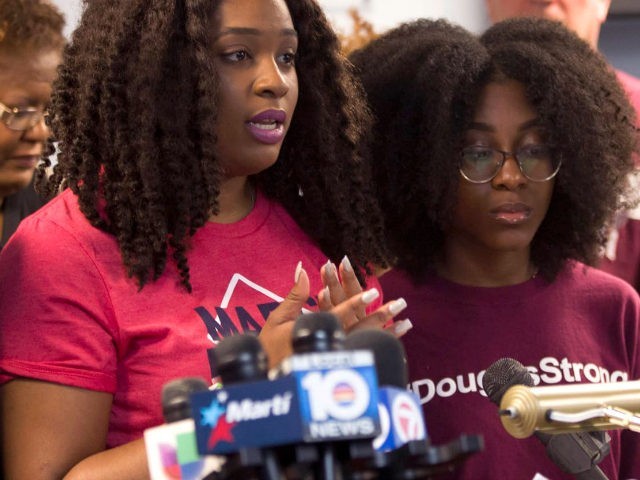The far-left HuffPost spoke to a handful of black students from Marjory Stoneman Douglas High School in Parkland, Florida, the scene of February’s mass murder of 17 people. These students feel ignored by their peers and the media.
“We’re saying you don’t see much of us at the forefront,” 17-year-old junior Mei-Ling Ho-Shing, who is black, told HuffPost. Referring to the highly visible Parkland students who traveled to Chicago to meet with minority students, she added, “It hurts, because they went all the way to Chicago to hear these voices when we’re right here. We go to school with you every day.”
HuffPost reported that nearly 40 percent of the school’s 3,000 students are non-white. Eleven percent are black. Nevertheless, of the five most visible Parkland anti-gun activists, four are white — including David Hogg and Cameron Kasky — and one is Hispanic, Emma Gonzalez.
The black Parkland students held a press conference last week.
Tyah-Amoy Roberts, a black student who spoke at the press conference, told Refinery29,“We feel like people within the movement have definitely addressed racial disparity, but haven’t adequately taken action to counteract that racial disparity.” She said that March for Our Lives organizers did not invite her to any of their meetings, adding, “They’ve been saying, but they haven’t been doing.”
The students were also angry at the media for focusing on everyone but the black students.
HuffPost wrote:
Ho-Shing and others say the news media has played a significant role in elevating the platforms of the largely nonblack leaders of March for Our Lives while leaving out the voices of their black peers. She noted that major news features, like the Time Magazine cover or “60 Minutes” interview, had not included black students.
“You can’t blame them for how big they got,” Ho-Shing said of her now-famous peers. “We’re definitely going to start talking to them, because this is not a divisive thing.”
While Ho-Shing felt it was a shame that black students had needed a press conference to be heard by media and the movement leaders at their school, she was confident her peers would be more inclusive moving forward.
“At the end of the day, we’re all fighting the same thing,” Ho-Shing said. “Black Lives Matter, March for Our Lives ― we’re all fighting gun violence, point blank, period.”
Read the full piece here.
Follow John Nolte on Twitter @NolteNC. Follow his Facebook Page here.

COMMENTS
Please let us know if you're having issues with commenting.